After lunching in the beautiful town of Seggiano, we just had to visit nearby Il Giardino di Daniel Spoerri. The Swiss artist created the sculpture park in the early 1990s and it opened to the public in 1997. Set among 16 hectares of rolling Tuscan countryside,

there are now 113 installations scattered seemingly at random. Even with map in hand, I think we missed quite a few. There are too many works to cover in one post, with 54 different artists represented, so I will firstly cover those by Daniel Spoerri himself. The adventure begins as soon as we leave the ticket office

with an oversized cup atop an antique capital standing on the lawn.

A baking oven has been constructed in the style of a Trulli, a traditional dry stone hut from the Puglia region of Italy. Five smoke stacks, modelled on a family of tailors dummies, have been added so when the oven is in use, fine smoke flows from the heads.

Daniel Spoerri is best known for his snare-pictures, a process where a group of objects, such as the remains of a meal along with the table setting, are fixed as they are and transformed from a horizontal plane to a vertical one. There are two snare-pictures cast in bronze at the garden. Luncheon Table in All Eternity is suspended on the exterior wall of the restaurant, Non Solo Eat Art, while Eternal Breakfast, complete with bread and eggs, complements it on the adjacent wall of the estate villa.


Many of the sculptures feature ordinary objects used in unconventional ways. Remnants from a foundry form the face of The Bersagliera, a sharpshooter who seems to have received a few shots herself, awaiting visitors outside the restaurant.

A Flower Bouquet made from mirrors, a variety of rods and a chestnut roasting pan is arranged in a flattened bucket.

The artist was invited by Acquedotto Santa Fiora to create a Golem, a human-like being from Jewish folklore usually made from clay. They gave him parts of water supply systems including old pumps, valves and sieves and Acqua Golem was born.

One of the first installations in the garden, Unicorns – Navel of the World, is on the site where, according to legend, the village of Seggiano once stood. There is now a spectacular view of the town on the opposite hill. The long horns protrude from horses skulls and are held by gloves like lances leaning towards the centre of the circle.


The inspiration for Damocles’ Rose Bower Walk came from a trip to England where Spoerri sketched a pergola comprising a row of interwoven sickles. Roses and Jasmine will eventually grow over the framework.

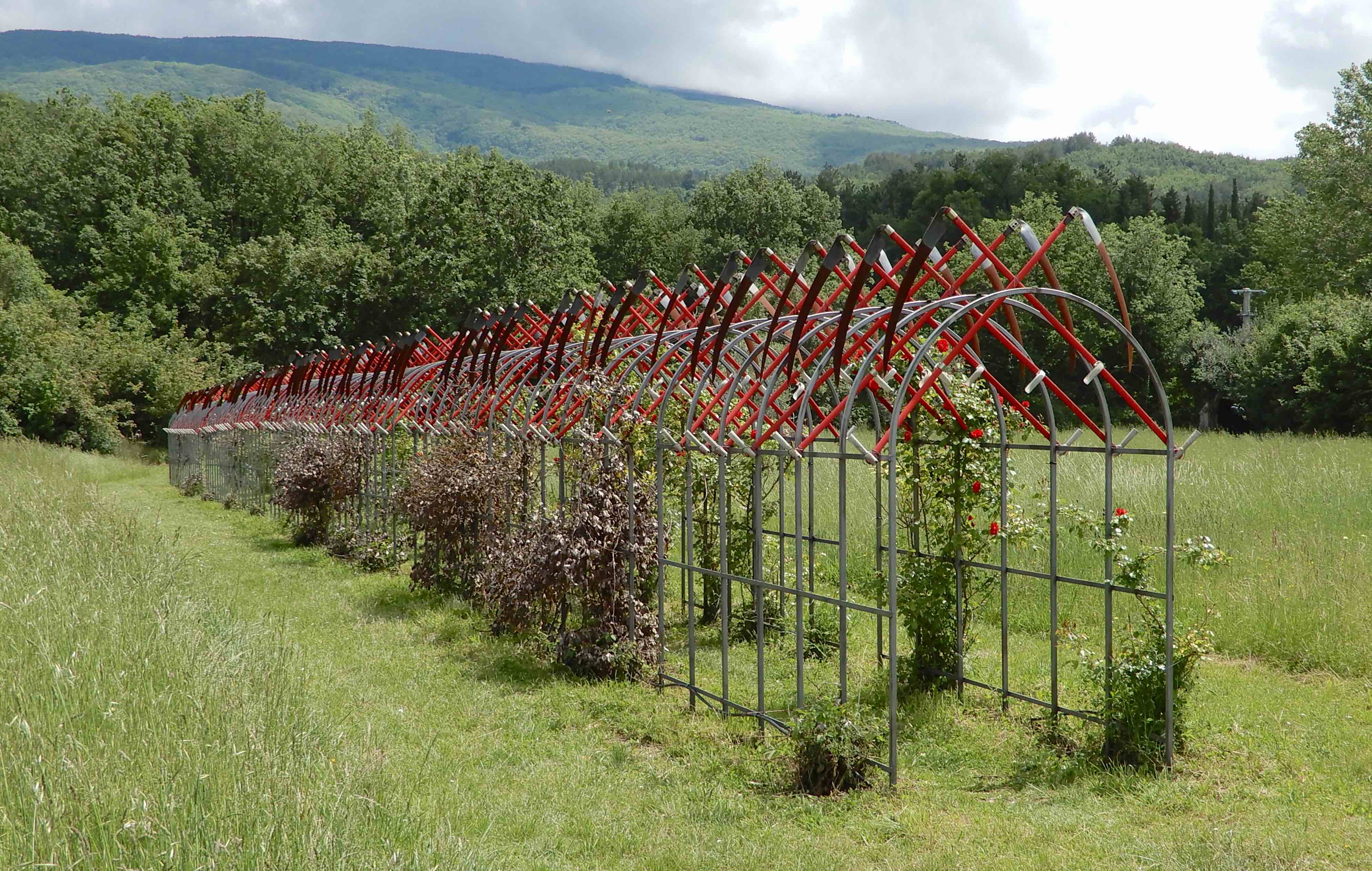

Marble slabs depicting the last meals of twelve famous women are mounted on a wall, an unusual monument to Marie Antoinette, Hannah Arendt, Hildegard von Bingen, Tanja Blixen, Madame Curie, Marlene Dietrich, Isadora Duncan, Mata Hari, Frida Kahlo, Cleopatra, Empress Elisabeth of Austria and the goddess Leda.




Eight gaunt Nightmares appear from the shadows and I am pleased to say I have never encountered anything like these in my sleep.

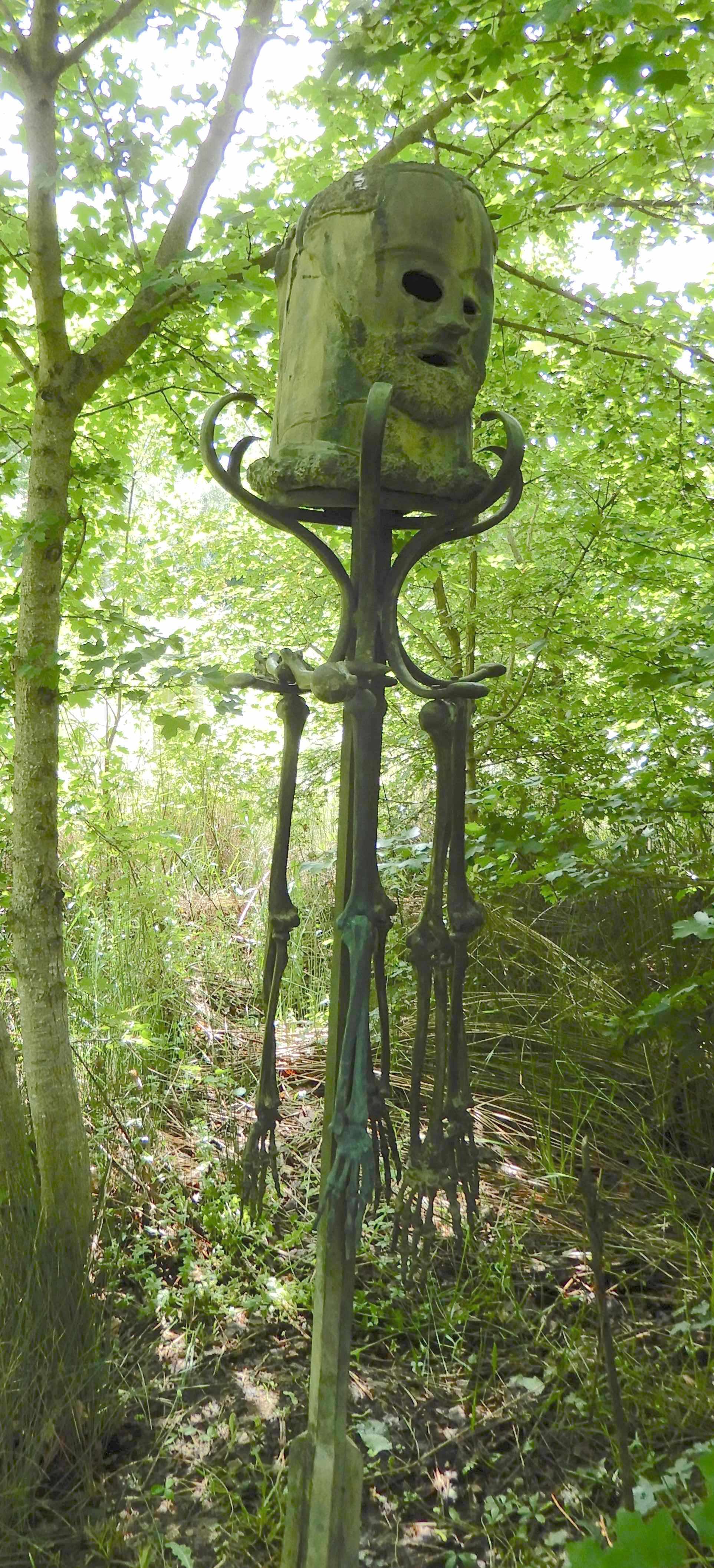
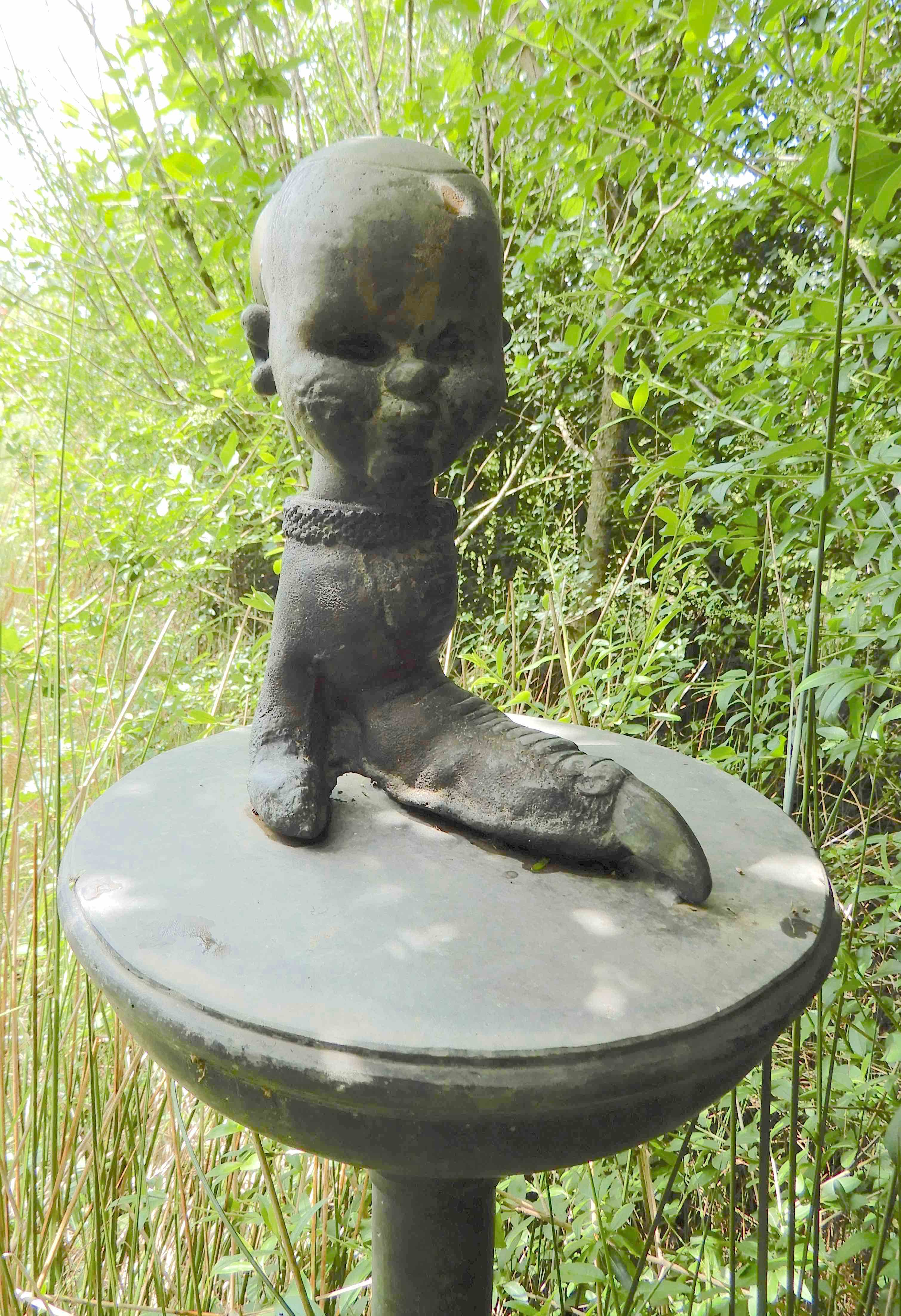

The scary theme continues with the four bronze cast skulls guarding Gorilla Bridge

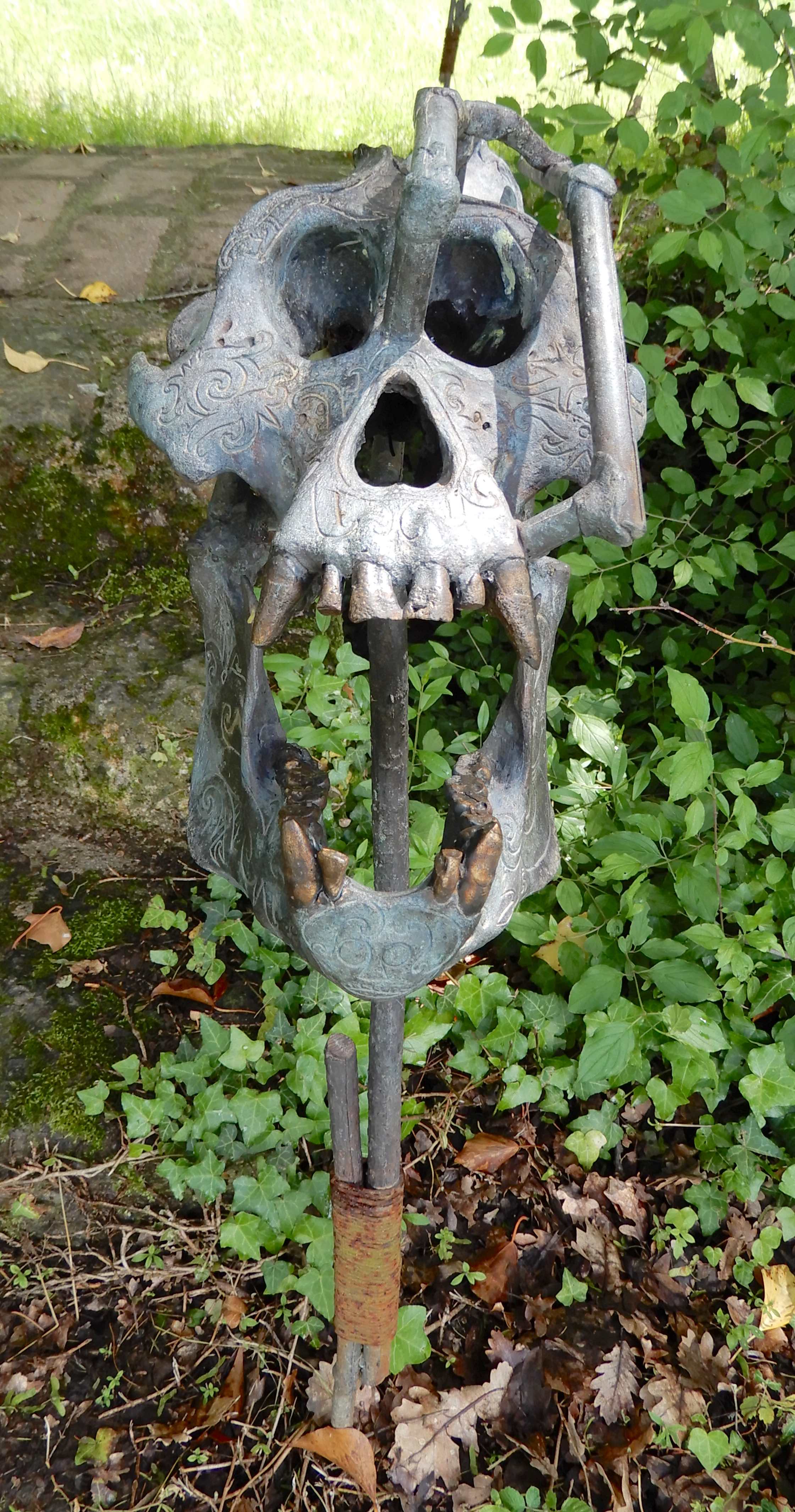
and the macabre totem of Skull Tree.
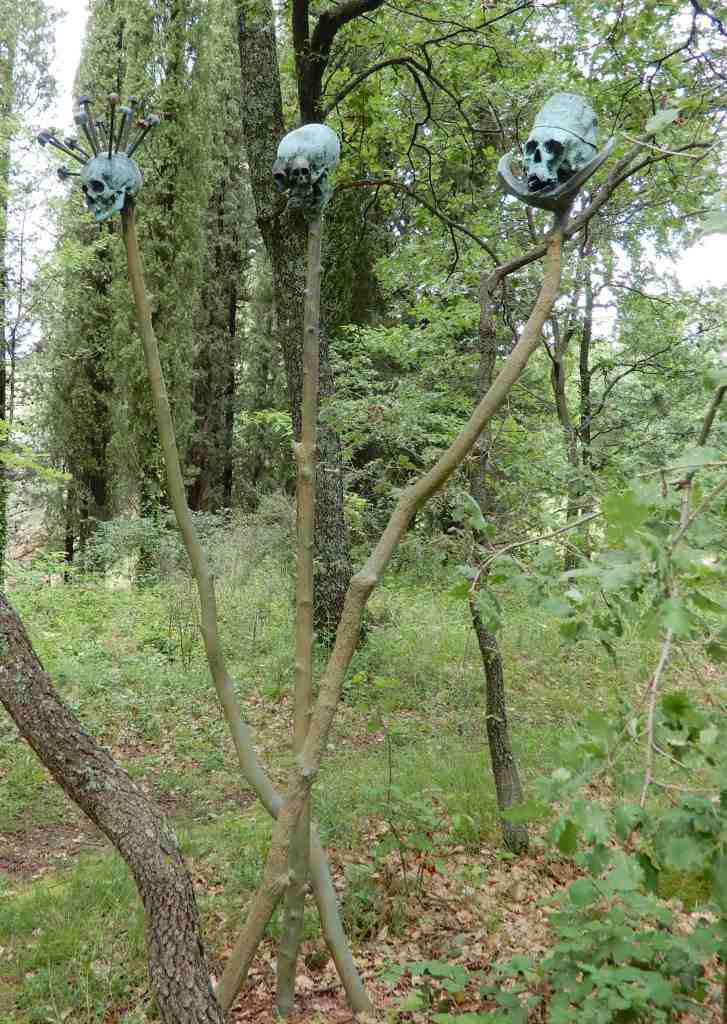
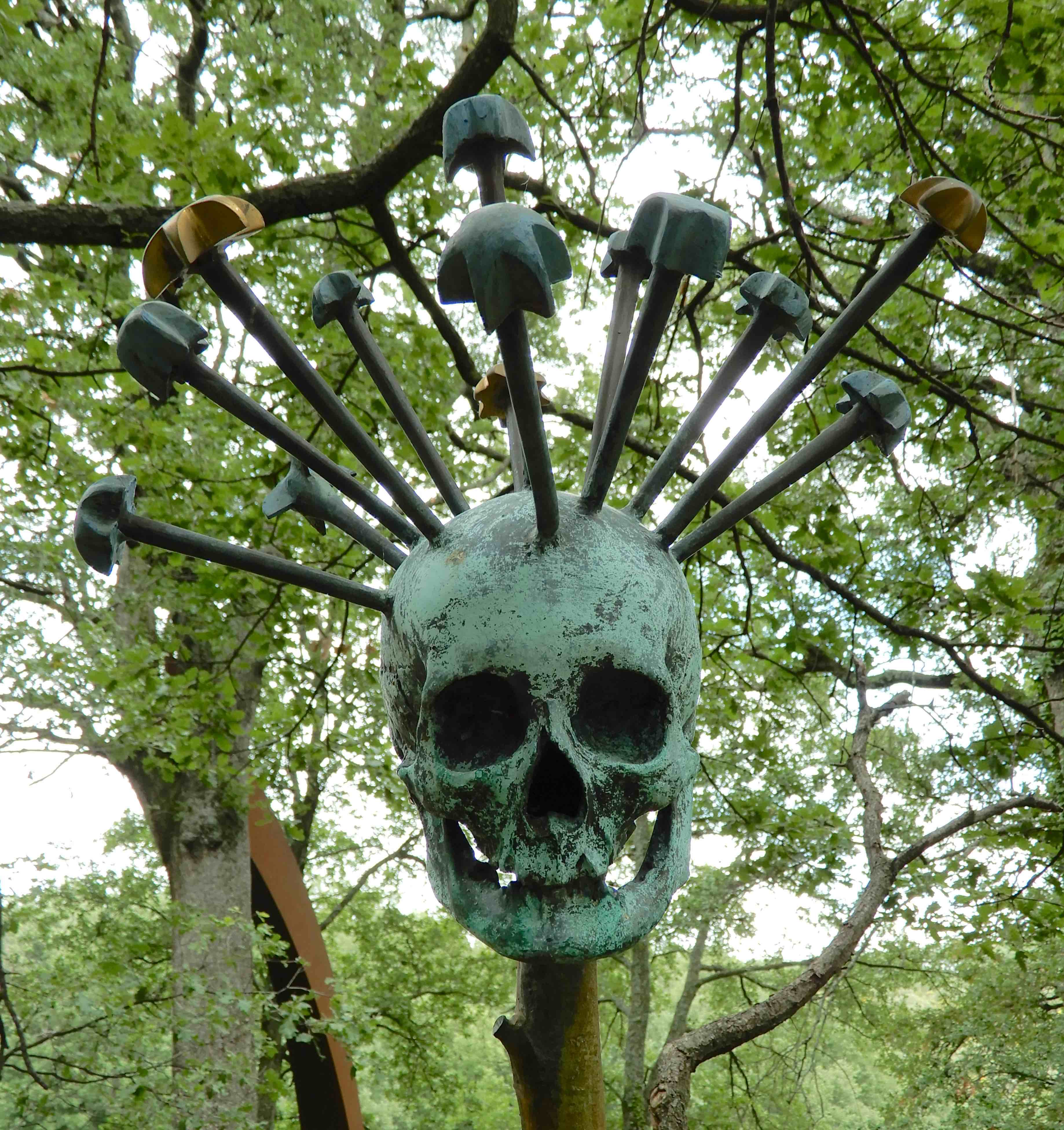


The title of You white? You black? comes from the merging of two figures where the African and European heads have been switched.
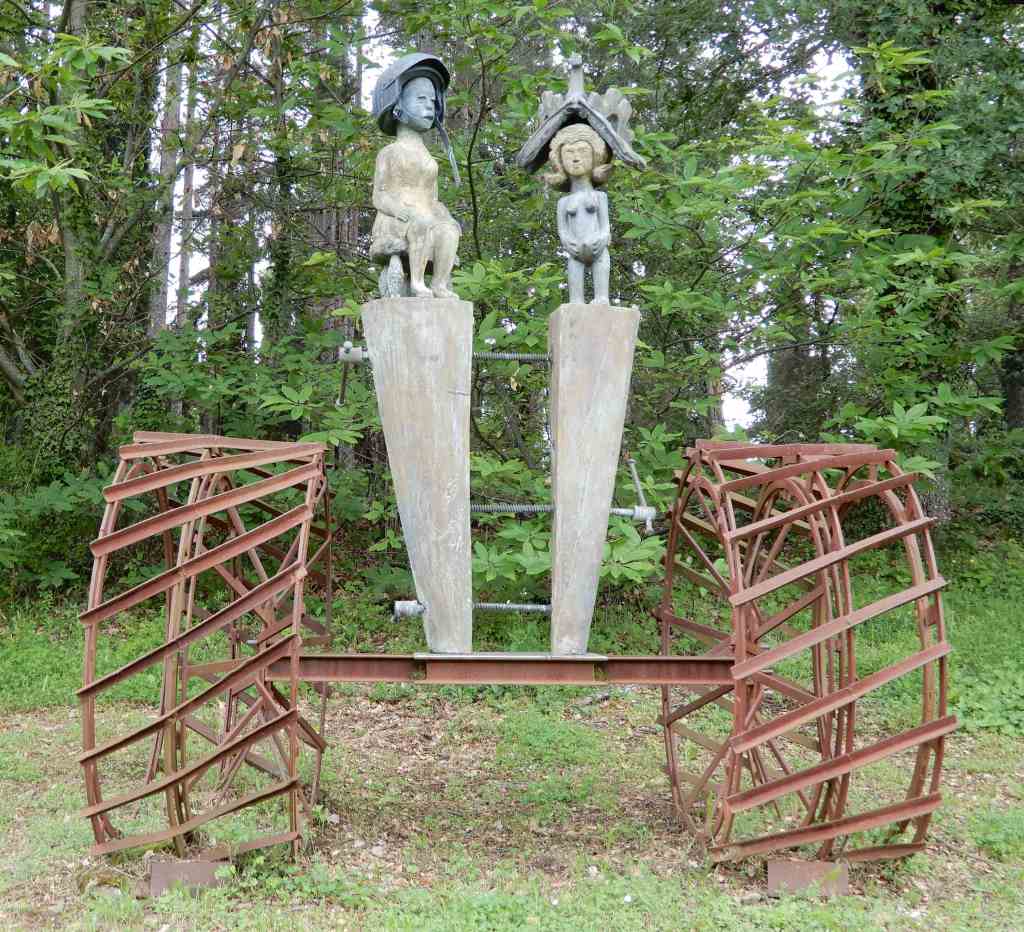


In a shady, wooded area, a Marble Table is set with movable pieces that are work samples from a studio in Carrara. The table is supported by cast bronze scraps rather than ordinary table legs.

Next to the table, a twisting column holds up a small golden head which appears to grow out of a flower bud. Renaissance is dedicated to the Sicilian town of Gibellina which was destroyed in an earthquake in 1968.


At the rear of the restaurant there appears to be a pile of old slippers, the kind that are made of felt and handed out at palace tours to protect the floors. No entry without slippers pays homage to artist Joseph Beuys who frequently used felt in his work.


The villa, where Daniel Spoerri lived for a long time, has been divided into four spacious holiday apartments all with fabulous views of the garden.

The Chain Heap is just that. Spoerri saw the mass of iron chains hanging in an Italian scrap merchant yard and had them transported to the garden where he augmented the collection. The result is reminiscent of a chieftain or medicine man decorated with fetishes.

Something you don’t expect to find in a sculpture garden is a meatgrinder, however, Spoerri finds the diversity of form of this piece of kitchen equipment astounding and intriguing. The 3 metre high Meatgrinder Fountain was sans water on this day but I imagine it would be quite a spectacle.
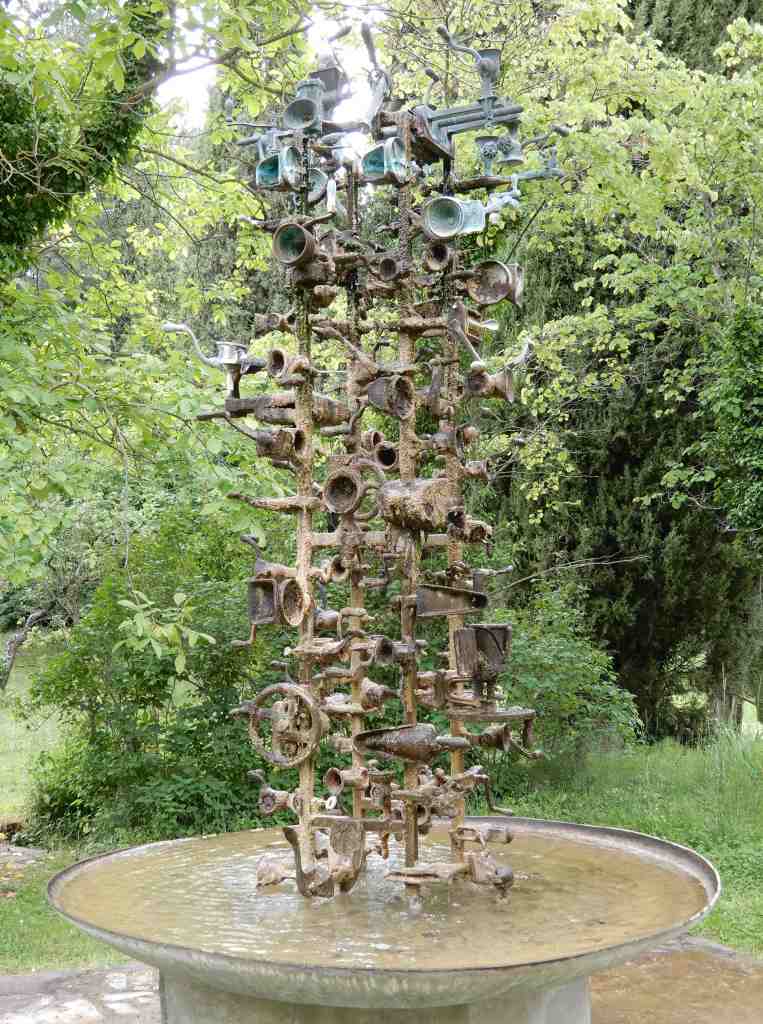
The same kitchen appliance has been combined with hat models for Warriors of the Night, a small battle-scarred army rising up from a pond.


Five life size mannequins lie distorted in a ditch, reminiscent of mass gravesites as humans destroy other humans. The Mass Grave of the Clones isn’t exactly uplifting, though, as the artist explains,
“Over and over again, the Giardino shows us dark sides, for without these there could be no beauty”.


The Labyrinthine Wall Path is based on a pre-Columbian Neolithic cave drawing, altered slightly to create a labyrinthine form, it was then ‘drawn’ on the meadow using a low wall. The cosmic union of Mother Earth and Father Son is symbolised by representation of a hermaphroditic creature with a phallus and breasts.


Tintin-Elefant is so named due to its similarity to the spherically headed hero of the Belgian comic series Tintin by Hergé. Obviously, the hoseline nose contributes to the second half of the title.

When Spoerri’s good friend Roland Topor died in 1997, he felt there should be something to memorialise him at the garden. Topor was a satirist and illustrator and so Spoerri selected a drawing from which to create the sculpture that is The Eccentric Reader.


Skull Chapel verified Spoerri’s fascination with the cadaver’s cranium. The collection housed in the chapel includes Tibetan monks’ skulls, two mummies’ heads and monkey skulls.



There are so many more incredible sculptures at Il Giardino, they will be featured in a later instalment.

How amazing!!
LikeLike
Yes, a real feast for the senses.
LikeLike
Fabulous! Love it! Thanks for sharing Kathy. Need to put this on the to-visit list!
LikeLike
It is a beautiful spot, allow about three hours to really soak it up.
LikeLike
Very interesting, what a creative artist.
LikeLike
I’ll be looking at the salvage yard in a different light.
LikeLike
Pingback: artists of Il Giardino | cannonhillchronicles
Pingback: Seggiano | cannonhillchronicles